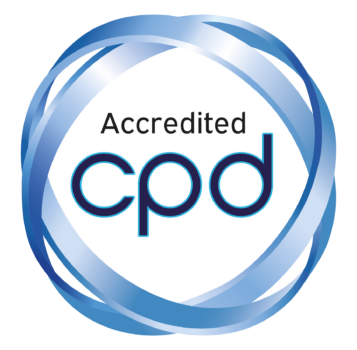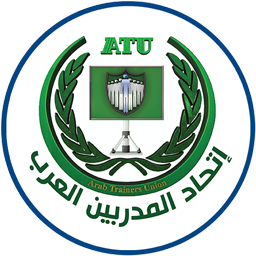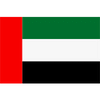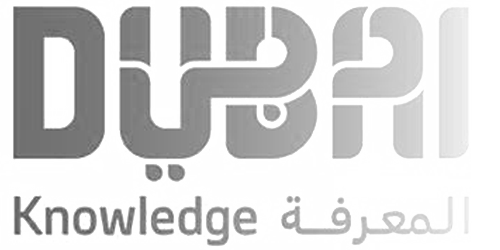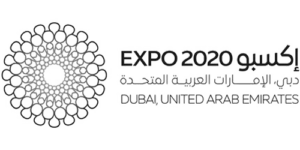- +971 6 568 7222
- info@btiuk.org
- Sat - Fri: 9:00 - 20:00
- HOME
- ABOUT
- AIAL GROUP
- QUALIFICATION
- English Beginners Levels
- English intermediate Levels
- English Advance Levels
- English Professional Diploma
- IELTS Preparation (Paper based & Computer Based)
- IELTS EXAM in (British Institute Center)
- TOEFL Preparation (Paper based & Computer Based)
- TOEFL EXAM in ( Amideast Center )
- American Board of English Language ABEL
- Business English (career Wise)
- French Beginners Levels
- French intermediate Levels
- French Advance Levels
- Germany Beginners Levels
- Germany intermediate Levels
- Germany Advance Levels
- ITDL information Technology Driving License
- ICDL International Computer Driving License
- ITIL Information Technology Infrastructure
- Library
- ITBMC IT Business Manager Certification
- MCSA Microsoft Certified Systems
- Administrator
- TOGAF Certification Program
- CIS Certified Information Security (Data Protection)
- CompTIA A+ Certification
- CompTIA Network+ Certification
- CompTIA Linux+ Certification
- CompTIA Project+ Certification
- CompTIA Security+ Certification
- CompTIA Server+ Certification
- CISCO CCENT
- CISCO CCNA
- CISCO CCNP
- Microsoft Azure
- Microsoft Dynamics
- Microsoft Exchange Server
- Microsoft SharePoint
- Microsoft Windows 7
- Microsoft Windows 8
- Microsoft Windows Server
- Microsoft SQL Server
- Microsoft Lyne Server
- Microsoft Office Certification
- Microsoft Project
- Microsoft Excel
- Microsoft Word
- Microsoft PowerPoint
- Microsoft Outlook
- Microsoft Publisher
- VB.NET Programming
- C# Programming
- C++ Programming
- ASP.NET Programming
- Java Programming
- PHP Programming
- SQL Programming
- MYSQL Programming
- Crystal Reports
- Graphics Design Certification
- Adobe Photoshop
- Adobe Illustrator
- Adobe lnDesign
- Adobe Dreamweaver
- Adobe Flash
- Adobe Acrobat
- Adobe Captivate
- CorelDraw
- Adobe Premiere Pro
- Adobe after Effects
- Web Design Professional Certification
- Joomla Programming
- HTML/CSS Programming
- PHP/MYSQL Programming
- Content Management System CMS
- Ecommerce
- Compliance Certification
- ACO Accredited Compliance Officer
- Advanced Certification in Regulatory Compliance
- Continuous Professional Development Program for
- Compliance Officer (CPD)
- Certificate in Business Compliance
- Advanced Certificate in Legal Compliance
- Certified Compliance Expert
- Certified Compliance Consultant
- Insurance in Compliance Certification
- Chartered Compliance Analyst
- RICO Registered Islamic Compliance Officer
- CCOA Certified Compliance Officer and Analyst
- Anti-Money Laundering Certification
- Anti-Money Laundering/Counter Financing Terrorism
- Certificate in Money Laundering in Capital Markets
- Chartered Anti Money Laundering Expert
- Certified Anti Money Laundering Specialist
- Certified Anti Money Laundering Consultant
- Specialist Certificate in Conduct Risk Management
- Specialist Risk in Correspondent Banking
- Risk Management in Audit International Certification
- ICAS 150/31000 in Risk Management
- Certified Risk Management Expert
- Certified Risk Management Consultant
- Risk Management & Insurance Certification
- Risk Management iso 31000
- CORM Certified Operations Risk Manager
- CRA Certified Risk Analyst
- SCl: Securities & Commodities Certification
- SC2: Securities and Compliance Certification
- SC3: Securities Consultants Certification
- Anti-Money Laundering International Diploma
- Compliance International Diploma
- Risk Management International Diploma
- Governance Risk and Compliance – (GRC International Diploma)
- Financial Crime Prevention Certification
- Certificate in Managing Fraud
- Specialist Certificate in Corporate
- Governance Governance Risk and Compliance GRC
- International Board of Compliance IBC
- Common Reporting Standard – CRS
- Master Business Administration (MBA Professional)
- Business Administration Diploma
- Business Management Diploma
- RBA Registered Business Analyst
- Business Analytics using Data Mining
- CSMA Certified Strategic Management Analyst
- CSPM Certified Strategic Planning Manager CSPC
- Certified Strategic Planning Consultant
- CBMC Certified Business Management Consultant
- MCP Management Consultant Professional
- MMC Master Management Consultant CLC Certified
- Leadership Consultant SMP Senior Management
- Professional Qualified Business Coach
- Leadership & Team Management
- Time Management
- Event Management Professional Press & Media Professional
- Public Relation & Customer Service Professional
- Corporate Excellence Strategic Planning Sports Professional
- Executive Office Secretarial & Professional Diploma
- Executive Secretarial Professional
- Office Management Professional Diploma
- RPS Registered Professional Secretary
- RAP Registered Administrative Professional
- CBAP Certified Business Analytics Professional
- CBRP Certified Business Research Professional
- Business Correspondence
- Certificate in Leadership
- Customer Service & Complaints Handling
- Selling Skills & Marketing Research
- Job Analysis & Evaluation
- Process Design and Performance Improvement
- Performance Management Strategy, Design and Implementation
- Measuring Customer Satisfaction and Management Decisions
- Customer-Focus for Business Excellence
- Capacity Building for Competence
- Improving Reception Staff Skills
- Business Networking & Time Management
- Marketing Research
- HR Human Resource Diploma
- International HR Driving License IHDL
- CHRM Chartered HR Manager
- UAE HR Law
- Human Resource Professional Diploma
- CHRA Chartered Human Resource Analyst
- KPl’s Key Performance Indicators
- Marketing & Sales Professional Diploma
- CSM Certified Sales Manager
- CMA Chartered Marketing Analyst
- CEC Certified Ecommerce Consultant
- E-Marketing Management Professional
- Educational Firm Promotion and Marketing
- Social Media Certification
- Digital E-marketing Professional Diploma
- Logistic & Supply Chain Diploma
- Logistics & Supply Chain Management Diploma
- Certified Logistics & Supply Chain Manager
- IFQM International Foundation for Quality Management
- PQM Professional Quality Manager
- Shipping & Clearance Professional
- Supply Chain Management
- Procurement Management Logistics in Distribution
- Inventory and Warehouse Management Purchases Professional Management
- Operations Management
- Purchase Logistics and Supply Chain Management
- Inventory Professional
- Certified Quantity Surveyor (CQS)
- Quantity Surveying Professional Diploma
- Master Quantity Surveying (MQS)
- Chartered Quantity Surveyor (ChQS)
- Civil Engineering Professional Diploma
- Mechanical Engineering Professional Diploma
- Electrical Engineering Professional Diploma
- Industrial Engineering Professional Diploma
- QA/QC Engineering Professional Diploma
- Agriculture Engineering Professional Diploma
- Master Project Manager (MPM)
- International Primavera P6
- Planning Engineering Professional Diploma
- Certified Engineering Construction Management (CECM)
- Construction Health & Safety Environmental Management
- Certified Engineering & Construction Contracts (Claim & Disputes)
- Certified Project Risk Manager (CPRM)
- Project Manager E-Business (PME)
- Certified Project Consultant (CPC)
- Certified Quality Control & Inspector
- Master Quality Manager – Master of Quality Control
- AAPM Agile Accredited Project Manager
- CCPC Certified Construction Project Consultant
- CPCC Certified Project Control Consultant
- CAE Certified AutoCAD Engineer
- CSA Certified System Administrator\
- CISD Certified Instructional Systems Designer
- CIS Certified Information Security (Data Protection)
- GIS Geographic Information Systems
- Institutional Networking & Media Communication
- Building Construction Technology
- Building Information Modeling BIM
- Building Finishes and Rehabilitation Works
- Preventive Maintenance for Building & Facilities
- Service Oriented Architecture
- Construction Site Management Site Management Plan
- How to write Engineering Technical Report
- Regulations, Laws and safety in buildings and facilities
- TQM in engineering projects
- Value engineering (VE)
- Quantity Take-Off and Tender Pricing (using Timber line software)
- Health & Safety on Construction Site
- Electrical Distribution Equipment’s (Operation and Maintenance)
- Architecture & Interior Design Certification
- Interior Design Professional Certification
- Engineering Architectural Art Certification
- SAIF Software Acquisition Improvement Framework
- 3D Max
- AutoCAD 2D and 3D
- SAP 2000
- ETAB
- STAD PRO
- CEGA Chartered Emirates Government Accountant
- CPA Certified Public Accountant
- CIPA Certified International Public Accountant
- IACPA International Arab Certified Public Accountant
- ECPA Emirates Certified Public Accountant
- CPAA Certified Public Accountant & Auditor
- Certified Public Accountant CPA Pakistan
- ACCA Associate Chartered Certified Accountant
- CGA Certified Government Accountant
- CMA Certified Management Accountant
- CIMA Certified International Managerial Accountant
- IACMA International Arab Certified Management Accountant
- CCA Certified Cost Accountant
- CCS Cost Control System
- CFM Certified Financial Manager
- CFC Certified Financial Consultant
- CFO Chief Financial Officer
- CISI Certified International Security & Investment
- Accounting Professional Diploma
- Accounting for Managers
- Accounting Professional Certification
- Financial Professional Certification
- Accounting for Non Accountant
- General Accounting
- Certified Financial & Accounting Expert
- VAT Expert
- Preparation for VAT Agent
- VAT Mechanism
- VAT Specialist
- VAT Contracting & Real Estate Area
- VAT Consultant
- Law Professional Diploma
- Legal Compliance in UAE Law
- Drafting Contracts & Legal Briefs Expert
- Medical Malpractice Inter- Medicine and Law
- Strategic Expert in International Law Instruments
- CLT Certified Legal Trainer
- CLC Certified Legal Consultant
- CLAM Certified Legal Affairs Manager
- CLBE Certified Liquidation Banking Expert
- FLEER Financial Legal Expert – Expertise Reports
- CPLA Chartered Political Legal Analyst
- Forex Performance Trading Tools
- Law & Legislation of Credit Card Use & Misuse
- Legal Paper Drafting & Decisions Regulations
- Accountability, Legislation and Mechanism
- Skills & Capacity Build of Litigation Court Pleading & Martial Arts
- Legal Controls in Sports Facilities Player & Stadiums
- Training OF Trainer – TOT
- Trainer OF Public Institution
- CIPT Certified International Professional Trainer
- CITS Certified International Training Specialist
- CITM Certified International Training Manager CITC
- Certified International Training Consultant CTTS
- Certified Technical Training Specialist
- CEGIA Chartered Emirates Government Internal Auditor
- CEGSA Chartered Emirates Government Senior Auditor
- CPSA Certified Professional Senior Auditors
- CPIA Certified Professional Internal Auditor
- CIA Certified Internal Auditor
- CICA Certified Internal Control Auditor
- CAM Certified Audit Manager
- CAM Certified Area Manager
- Auditing professional Diploma
- Auditors Skills Certifications
- Accounting and Auditing Expert (Courts Experts)
- Security Professional Diploma
- Security Professional Consultant SPC
- Security Professional Expert SPE
- Certified Security Consultant
- Foundations of Security and Crime Science
- Crime Risk Management
- Certified Anti-crime According Policing Strategic
- Ethical Policing
- Prevention and Disruption
- Management for Police Leaders
- Perspectives on Organized Crime
- Perspectives on Terrorism
- Investigation and Detection
- Intelligence Gathering and Analysis
- Qualitative Research Methods
- Countering Organized Crime and Terrorism
- Crime and Forensic Science
- Real Estate Management Diploma
- Real Estate Marketing Diploma
- Property Management Diploma
- Property Evaluation Diploma
- Property Exhibition Diploma
- Executive Hotel Management
- Hotel & Hospitality Management Diploma
- Hospitality Management Diploma
- Hospitality and Customer Service
- Hotel Accounting Diploma
- Hotel Front desk Management
- Hotel Human Resource
- Hotel Operations Diploma
- Hotel Marketing and Sales
- Operations and Culinary Business Management Diploma
- WMEC Wealth Management Expert Certification
- Risk Management & Insurance
- RFM Registered Facilities Manager
- Economics Professional
- Statistics Professional
- Constitutional Recently Management
- CEGFM Chartered Emirates Government Financial Manager
- CFT Certified Financial Trainer
- Financial Professional Certification
- Wealth Management Diploma
- CWM Chartered Wealth Manager
- CAM Chartered/Certified Asset Manager
- MFP Master Financial Planner
- CFP Certified Financial Planner
- RFS Registered Financial Specialist
- RIFS Registered Islamic Financial Specialist
- IFRS International Financial Reporting Certification
- Financial Analyses Diploma
- AFA Accredited Financial Analyst
- CFA Certified Financial Analyst
- ACFA Arab Certified Financial Analyst
- Compliance Certification
- ACO Accredited Compliance Officer
- Advanced Certification in Regulatory Compliance
- Continuous Professional Development Program for Compliance Officer (CPD)
- Certificate in Business Compliance
- Advanced Certificate in Legal Compliance
- Certified Compliance Expert
- Certified Compliance Consultant
- Insurance in Compliance Certification
- Chartered Compliance Analyst
- RICO Registered Islamic Compliance Officer
- CCOA Certified Compliance Officer and Analyst
- Human Rights Diploma
- Human Rights Protection through Mechanisms and World’s Strategies
- Women Rights: Law and Practice
- Wadeema Children Law
- Culture of Economy: Compliance Monitoring Ways of
- Economic Human Rights
- Media and Human Rights Protection Mechanisms
- Cache Level 3
- Cache Level 5
- Certified Nurse Assistant CNA
- Certified Laboratory technician assistant
- Certified Pharmacist technician assistant
- Hospital Management Diploma
- Clinic Management Diploma
- Medical Center Management professional
- Diploma Hospital Human Resource
- Hospital Accounting
- Hospital Front Desk Management
- Hospital Operations Manager
- CIB Certified Islamic Banking
- Certified Islamic Bank Manager
- Professional Master in Islamic Finance
- Risk Management in Islamic Finance Organization
- Human Resource in Islamic Finance Manager
- Certified Islamic in Capital Markets
- Islamic Trade Finance Certification
- Zakat Management Certification
- Certified Islamic Banking Product Expert
- Certified Islamic in Accounting
- Islamic Banking Accounting Diploma
- Banking Transactions Diploma
- Chartered Islamic Banker
- Preparation Regional Program of the International Arbitrators
- IT Arbitration and Information Protection
- Arbitration in Banking and Finance Disputes
- Compensation in Commercial Arbitration
- Maritime Arbitration & Marine Insurance Claims Settlement
- Arbitration in Banking Contracts
- Arbitration in Construction Contracts
- Arbitration in Financial Securities Disputes
- FIDIC Real Estate Engineering & Arbitration
- Arbitration in Banking Disputes
- Arbitration in Insurance Disputes
- FIA Financial Industry Arbitration
- Certified Islamic Arbitrator
- Family Arbitration
- Certified Educational Consultant
- School Management Diploma
- Kindergarten Management Diploma
- Nursery Management Diploma
- Dynamic Relation
- Early Education Diploma
- Library Management Diploma
- Performance Standards
- School Community
- Education Strategic 21st Century
- Study Plan
- NEBOSH International General Certification (IGC)
- NEBOSH Diploma Courses
- NEBOSH International Diploma
- NEBOSH National Diploma
- NEBOSH National Environmental Diploma
- NEBOSH International Environmental Diploma
- NEBOSH Certificate Courses
- NEBOSH Process Safety Management
- NEBOSH Oil & Gas Certificate
- NEBOSH National General (NG)
- NEBOSH Certificate in Fire Safety
- NEBOSH International Construction Cert
- NEBOSH National Construction Cert
- NEBOSH Environmental Certificate
- Health and safety Professional Diploma
- Health and Security Professional Diploma
- Anti-Corruption Professional Diploma
- ACCE Anti-Customs Corruption Expert
- Financial Corruption & Preventive Measures Expert
- Certified Crime Expert Money Laundering
- Manipulating Crime Law for Shares and Bonds, Responsibility of the Financial Markets
- Media Anti-Corruption Expert
- Certified Anti-corruption Expert – based Financial and Administrative
- Certified Expert in the Fight against Corruption in Press and Media
- Certified Expert in the Anti-corruption Education
- Governance Rules Corruption in the Banking Management System
- Methodologies & Strategies to Confrontation Customs Corruption
- Political Corruption, Bureaucratic and Economic
- Transparency in Fighting Education Sector Corruption
- IELTS
- ETHICS
- Accreditation
- PARTICIPATE
- CONTACTS
- Multilingual

